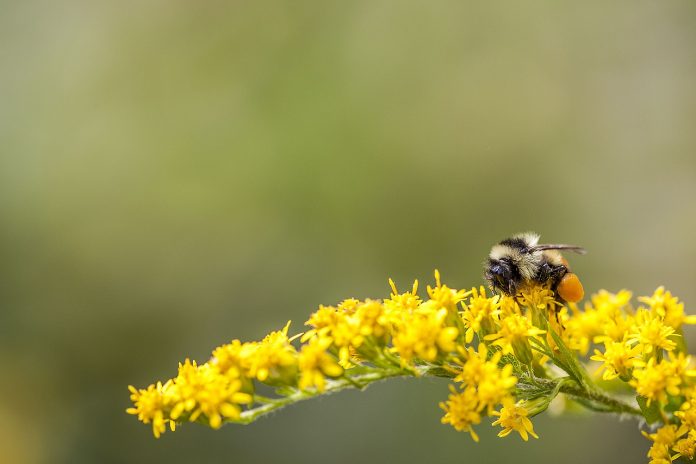By Abby-Gayle Prieur
Pollinator habitat, recognized by an abundance of diverse, native wildflowers and just a sprinkling of native grass, is an essential part of Ohio’s farming landscape.
Most people recognize the importance of pollinator habitats for bees, which are essential to the production of fruits and vegetables like apples, melons and cucumbers. However, pollinator habitat is also used by other wildlife that unintentionally assist farmers in growing healthy crops.
Pest predators, such as wasps and insectivorous birds, thrive in pollinator plots and provide free pest control when they visit crop fields. Unfortunately, quality pollinator habitat has become rare as land-use priorities have shifted, leading to a decline in bee and butterfly populations and a lack of space for pest predators to live.
Biologist
In an effort to reverse this trend and bring pollinators back to the landscape, Pheasants Forever Inc., in partnership with the National Fish and Wildlife Foundation and the Natural Resources Conservation Service has added a farm bill biologist to their team.
The biologist will work with interested farmers and landowners in eastern Ohio to create pollinator habitats and help point producers toward funding sources, such as federal Farm Bill programs.
Farm bill programs, such as the Environmental Quality Incentives Program, the Conservation Stewardship Program and the more familiar Conservation Reserve Program can be used to help producers improve existing habitat or convert land into pollinator habitat.
Programs
These programs can provide money for non-native vegetation removal, cost of native plant seed mixes and rental payments, among other things.
The programs also come with a direct connection to a conservation planner who can work together with a producer to locate the best site for pollinator habitat, determine how much acreage may be converted, and to create a customized, written conservation plan.
The plan provides guidance on when and how to create a pollinator plot from scratch. In addition to assisting producers, the Farm Bill Biologist can provide other land-holding entities, such as school groups, businesses, conservation clubs or townships, with information about funding opportunities and provide guidance on how to create wildlife habitat on their lands.
For those interested in learning more about the effort to increase pollinator habitat in Ohio or those who are considering creating pollinator habitat on land they own or manage, contact Abby Prieur, Ohio Farm Bill wildlife biologist, at, or contact your local NRCS service center.
(Abby-Gayle Prieur is an Ohio Farm Bill wildlife biologist with Pheasants Forever, Inc. and Quail Forever. She can be reached at aprieur@pheasantsforever.org or 330-577-3804.)













